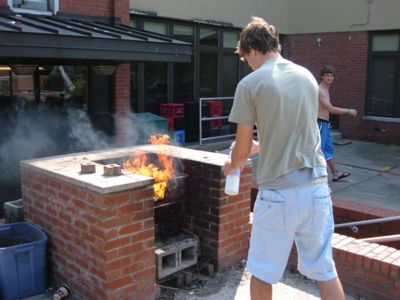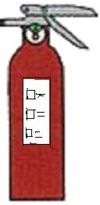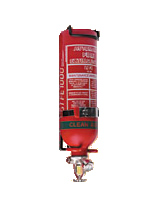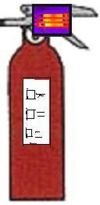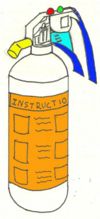Fire extinguisher redesign
From DDL Wiki
(→Pugh Chart) |
(→Pugh Chart) |
||
| Line 85: | Line 85: | ||
|} | |} | ||
| + | As the chart indicates, the first two of our design choices are relatively similar when compared to the original product, while the final design choice was quite an improvement. Consequently this will be the design we shall endeavor to create. | ||
| - | In looking at all of our choices | + | In looking at all of our choices, we took six categories into account: Safety, Reliability, Ease of Operation, Cost, Impact upon other Objects, and Aesthetics. |
| + | |||
| + | For the Automated Fire extinguisher, the most beneficial feature came from ease of operation. Since it is made to be unmanned, there is nothing that the user has to do. In addition, the chemicals are designed to be safe for kitchen and home appliances. However, these benefits are countered by the fact that it is an extremely costly product, almost 7x the original product. In addition, the safety and reliability are compromised by the possibility of failure to discharge, for whatever reason. Ultimately, we found the | ||
Revision as of 21:00, 10 October 2007
Contents |
Market Research
Live Trials
In order to better understand how people use a fire extinguisher, we set up a trial in which we observed a person attempting to extinguish a grease fire. The fire was set up in a brick grill for safety purposes, and was created with used grease from a kitchen.
The subject, who had never used a fire extinguisher, was told to put out the fire, and received no additional help or instructions.
He first picked up the extinguisher, and pulled the pin while walking over to the fire. He took a quick look at the label as he adjusted his grip. He stood about 5 feet away and pushed the handle down, but the extinguisher did not discharge. After further examination, he realized that the pressure gauge showed that the extinguisher was empty. While it was not empty, it was not pressurized either. While the gauge correctly showed this, the user did not look at the gauge.
We set the trial up again with another extinguisher. This time the subject looked at the gauge while walking over to the fire and gripped the extinguisher correctly from the start. He saw that it was full and proceeded accordingly. Again he stood about 5 feet from the fire and pushed down on the handle. He sprayed the extinguisher for 1-2 seconds at the fire and then stopped, as it looked like the fire was out. He stepped closer to look through the cloud of dry chemical from the extinguisher. However, the fire flared back up again a few seconds. He again discharged the extinguisher for a 1-2 second burst. This repeated a few times as the fire kept flaring after each 1-2 second blast. Eventually, with a little encouragement, the subject discharged the remains of the extinguisher from a safe distance.
After the experiment, we interviewed the subject about his fire extinguishing experience. We took into account his responses as well as our observations and came up with the following key problems to address:
- 1) User does not always look at pressure gauge
- 2) User only looked at the pictorial instructions
- 3) User did not discharge entire extinguisher
- 4) User did not always aim at base of fire
- 5) User moved too close to fire
- 6) User initially did not grip extinguisher correctly.
It is important to note that many of these problems could be avoided if the user reads the instructions listed on the extinguisher. However, most of the instructions are printed in very small text. The user only looked at the pictures, which highlight the most important instructions.
Firefighters Interview
Station 14 – Pittsburgh Fire Department Interview & Insight
On the 26th of September, the design team took a trip to fire station 14, located in South Oakland, to interview the crew on their knowledge of problems surrounding fire extinguishers and household fires. Relevant findings include:
1. Smoke inhalation is the leading cause of death and injury in household fires.
2. Most common causes of household fire is carelessness (candles, cigarette butts, stovetop grease, ect.)
3. Most common misuses include not aiming at the base of fire, not applying enough extinguishing agent to fully suppress the fire, and not calling the fire department before they attempt to extinguish it themselves.
Design Choices
Pugh Chart
As the chart indicates, the first two of our design choices are relatively similar when compared to the original product, while the final design choice was quite an improvement. Consequently this will be the design we shall endeavor to create.
In looking at all of our choices, we took six categories into account: Safety, Reliability, Ease of Operation, Cost, Impact upon other Objects, and Aesthetics.
For the Automated Fire extinguisher, the most beneficial feature came from ease of operation. Since it is made to be unmanned, there is nothing that the user has to do. In addition, the chemicals are designed to be safe for kitchen and home appliances. However, these benefits are countered by the fact that it is an extremely costly product, almost 7x the original product. In addition, the safety and reliability are compromised by the possibility of failure to discharge, for whatever reason. Ultimately, we found the

